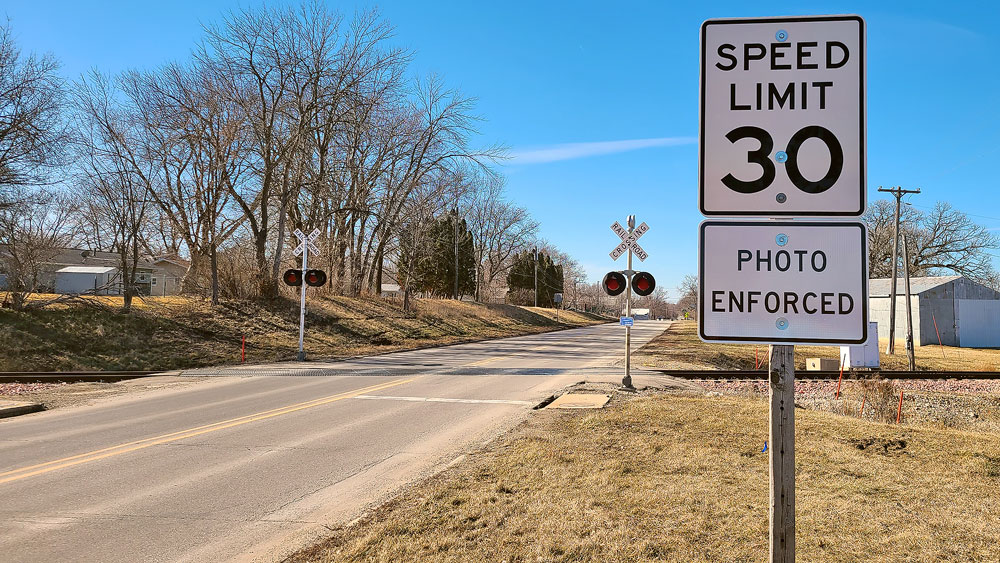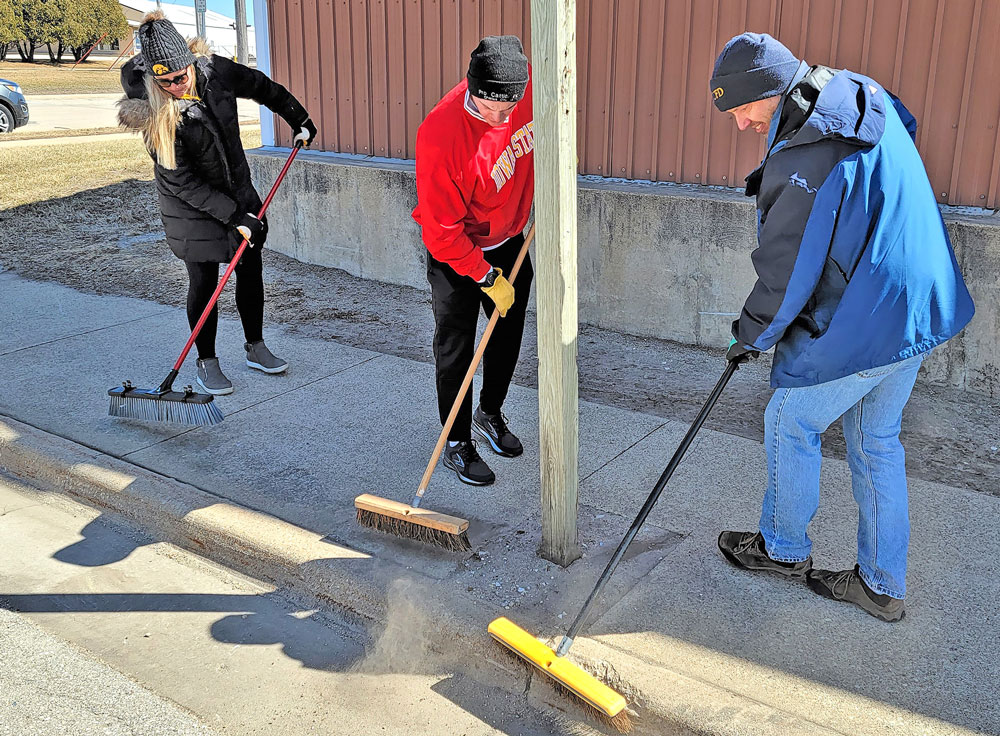Pipeline project VP addresses concerns; Floyd County public meeting is Monday

By Bob Steenson, bsteenson@charlescitypress.com
The public meetings to be held Monday in Floyd and Butler counties will be the last meetings required to be held by Navigator CO2 Ventures before it formally petitions the Iowa Utilities Board for a hazardous liquid pipeline permit.
The $3 billion project proposes burying about 1,300 miles of steel pipe through 36 Iowa counties including Floyd County, to transport liquid carbon dioxide captured from ethanol and fertilizer plants to be stored far underground in central Illinois.
The meeting in Floyd County will begin at noon Monday, Jan. 24, at the Youth Enrichment Center at the Floyd County Fairgrounds.
The final meeting will be held beginning at 6 p.m. Monday at the Greene Community Center in Greene.
The two meetings are among a number of those that were rescheduled from earlier because of weather.
Elizabeth Burns-Thompson, the vice president of governmental and public affairs for Navigator CO2 Ventures, talked with the Press in December, shortly before the meeting date that had originally been scheduled in Floyd County.
She addressed many of the questions and concerns that had been coming up at the public meetings that had been held up to that point.
Burns-Thompson said she encourages people to attend the meetings and “ask the tough questions” — What does this mean if ethanol isn’t around anymore? Why this land? Why two projects? Is this really even safe? Does this actually work? — “which are absolutely fair questions,” she said.
“This technology is relatively new to us across the corn and soybean belt. It was something I learned joining the team here at Navigator. So I think it does provide us an opportunity to learn about what has the potential to be pretty cutting edge to many of the industries that are important to those of us across the countryside.”
Much of the opposition that has developed related to this and other CO2 pipeline projects falls into three main areas — 1) land use questions; 2) perpetuating a reliance on fossil fuels instead of investing in other resources and not moving fast enough on carbon reduction; and 3) the safety of the projects.
Burns-Thompson addressed each of those areas.
Many people who question the safety point to a pipeline rupture in 2020 in Satartia, Mississippi, and send links to a lengthy HuffPost article titled “Gassing Sartartia” that examined what happened there, including making many people sick.
“Safety is absolutely the most critical piece here,” Burns-Thompson said. “We do have about 5,000 miles of CO2 pipeline in operation today, so we do have some projects that we can look to, and unfortunately some incidents that we can learn from where there has been release of product, specifically the incident in Mississippi.”
One of the events leading up to that rupture was a record rainfall that led to a mudslide, undercutting the foundation the pipe was laid in, she said.
“As part of that we intend to take our pipe deeper. A lot of pipeline infrastructure is between that 36 and 48 inches. We intend to be at least 5 feet deep across the footprint, and in many places deeper,” she said.
“Our general rule is that we want to be below any and all other infrastructure. One, for the stability that’s associated with going deeper, but secondarily, the biggest threat to this line is third-party interference. So if you are below any and all other infrastructure, you are kind of out of the way of any maintenance activity or any excavation that might need to happen with any of those other lines that we may be crossing,” she said.
Navigator is also planning to use a type of steel that has more ability to bend before it breaks, she said.
Another issue is the purity of the product being transported, she said.
“When looking at the Mississippi incident, we’re looking at the composition of the product itself. Purity is really important to this. The levels of H2S, or hydrogen sulfide, that was in that CO2 in the Mississippi incident was much higher than the threshold which we will be putting in place for some of those impurities,” she said, adding that the higher level of H2S contributed to people getting sick.
“CO2 in itself can be dangerous. We are seeking a hazardous liquid pipeline permit here in the state of Iowa because CO2, in its compressed liquid fashion, can be dangerous for humans and livestock when encountered in this level of concentration,” she said.
“It pulls the oxygen out of the air. It can be an asphyxiant. It is heavier than air, so on a calm day, in a low-lying area, that is where we have the most potential to be hazardous to human health or livestock. We are absolutely taking that into account with a number of the safety specifications we are putting into the line,” Burns-Thompson said.
“Most directly is placement of mainline valves. We will have those valves in place that can and will close in a matter of seconds in the event that there’s ever a change in temperature or flow or pressure. It isolates that material and thus the only amount that would be released is whatever is in that small space between those two valves,” she said.
The company will also work with state and local agencies to provide them with the training and equipment they would need to react to a leak.
“That’s an ongoing commitment through the project, not a one-time investment of equipment. We want to make sure that equipment is staying up to date and operational,” she said.
“We are required to do drills, so we would encourage those local responders to be part of those drills with us and compensate for time and any training that are associated with that as well,” she said.
“We want to be part of these communities. We want a project that not only we can stand up and be proud of and be successful with, but also something that the communities can be proud of as well.”
Regarding the impact of the pipeline on agricultural land, Burns-Thompson said there are already 46,000 miles of pipelines across Iowa carrying various products, and studies have shown they have relatively little impact on the value of the land.
“We are required as a company to compensate for any impacts. It’s on us to make those landowners whole for any disparate impacts. Damages, crop losses, all of that is within that compensation perspective,” she said.
She said some restrictions will be imposed on the 50-foot right of way the company is seeking for the pipeline.
Trees and above-ground structures interfere with monitoring the pipeline, because the company will be flying over the line on a regular basis to visually inspect the route. Some structures or tree root systems could also interfere with the integrity of the pipeline, she said.
“We are proposing a non-exclusive easement. What that means is the area around the easement is not encumbered from other easements. So if, down the road, an individual wants to run tile above the line or there’s a natural gas line that’s proposed, we absolutely can work with those entities and work can be done. The only restrictions would be above ground infrastructure. And we’d want to work through the 811 process if there’s any excavation needed,” she said.
Regarding carbon reduction and the future of the ethanol industry, Burns-Thompson said a study by the federal Energy Information Administration estimated that 79% of new vehicle sales will still be using liquid fuel in 2050.
“We will have liquid fuels around, not only for new vehicles, but to power the existing fleet, for decades,” she said.
If reducing the amount of carbon in the atmosphere is the goal, then ethanol and carbon sequestration help move that along.
“CCS (carbon capture and sequestration) helps get you part of the way there. It’s focused on the process emissions at these facilities. That, in conjunction with the efforts that are going on on farms to reduce the carbon intensity or the carbon score of those feedstuffs, the corn that’s coming into these plants, is what’s going to help these industries reach that net-zero or net-negative goal,” she said.
“Facilities that implement this type of technology can reduce that carbon index effectively almost in half. You partner that with what’s happening on farms, that’s how you reach that zero threshold,” she said.
“This is allowing the existing infrastructure and existing processes to improve, and we know that the ethanol of a decade ago is not like the ethanol of today. It’s gotten better. These plants have continued to improve. Technology like this is what’s going to help them continue to improve so they’re competitive and viable for decades to come, and keeping these rural processors around is really important to many of these smaller communities that look to these as the major employers.”
Burns-Thompson said the business model for Navigator CO2 Ventures is to be involved in the transportation only. The companies will own the CO2 capture equipment and will own the CO2, so any federal CO2 sequestration tax credits will remain with those companies.
“Right now that’s about $50 a ton. What is being talked about in both chambers of Congress is the potential for that tax credit to increase to $85 a ton. Again, all of that remains here at home with your local ethanol plant or your local fertilizer facility,” she said.
“We’re in the business of transporting product. We’re not in the business of marketing fuel. These ethanol plants or these fertilizer facilities know best how to market that end product, and they should be able to continue to do so,” she said.
“They have the option of where they want to sell that ethanol or that fertilizer to make the most out of the value of that. That is looking to be more and more in those low carbon fuel marketplaces where they pay a premium associated with end products that have that lower carbon index score,” Burns-Thompson said.
“It very much allows the plants to have a level of autonomy and determine how they want to go about that. They do have a lot of options.”
Navigator CO2 Ventures hopes to receive approval from the five states included in the project — Minnesota, South Dakota, Nebraska, Illinois and Iowa — in time to construct the pipeline and begin operations in early 2025.
It would transport carbon dioxide captured from ethanol plants including eight Valero plants, the Iowa fertilizer company OCI in Weaver, and other ethanol and fertilizer plants, condense the CO2 to its liquid state and then transport it to geological formations in central Illinois where it would be permanently stored a mile or more underground.
Navigator is the second company to propose a carbon capture and storage (CCS) system that will include Iowa and its many ethanol and other carbon-producing facilities.
Summit Carbon solutions held a public meeting in Floyd on Sept. 20 for a project that would involve Iowa, Minnesota, North Dakota, South Dakota and Nebraska. That project would store the carbon dioxide underground in North Dakota.
The Summit Carbon project, proposed by Summit Ag Investors of Ames, would cut across Floyd County from east to west, including going through Charles City.
The Navigator project would come into Floyd County from the south, through Butler County, and would end a few miles south of Floyd.
A third pipeline project was also recently announced.
Wolf Carbon Solutions said it has an agreement with Archer-Daniels-Midland Co. to take carbon dioxide from its facilities in Cedar Rapids and Clinton in eastern Iowa and transport it to an existing carbon sequestration site in Decatur, Illinois.
The pipeline would run about 350 miles and would have additional capacity to accommodate captured carbon from other facilities, Wolf Carbon Solutions said.








Social Share